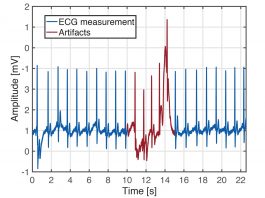Researchers led by the University of Cambridge (UoC), UK, have used additive manufacturing techniques to create ultra-thin electronic fibres which can be used to develop highly sensitive sensors.
The additive manufacturing technique for these electronic fibres, which are 100 times thinner than a human hair, can be used to make non-contact, wearable, portable respiratory sensors. The highly sensitive sensors developed by UoC can also be attached to a mobile phone to collect breath pattern information, sound, and images at the same time.
First author Andy Wang, a PhD student from Cambridge’s Department of Engineering, demonstrated in a new paper, published in the journal Science Advances, how these sensor can be used to test the amount of breath moisture that is leaked through face coverings. The fibre sensors significantly outperformed comparable commercial sensors, especially in monitoring rapid breathing, which replicates shortness of breath.
Dr Yan Yan Shery Huang from Cambridge’s Department of Engineering, who led the research, said: “Sensors made from small conducting fibres are especially useful for volumetric sensing of fluid and gas in 3D, compared to conventional thin-film techniques, but so far, it has been challenging to print and incorporate them into devices, and to manufacture them at scale.”
The fibre printing technique creates a core-shell fibre structure, with a high-purity conducting fibre core wrapped by a thin protective polymer sheath, similar to the structure of common electrical wires, but at a scale of a few micrometres in diameter.
In addition to the respiratory sensors, the printing technique can also be used to make biocompatible fibres of a similar dimension to biological cells, which enables them to guide cell movements and ‘feel’ this dynamic process as electrical signals. Also, the fibres are so tiny that they are invisible to the naked eye, so when they are used to connect small electronic elements in 3D, it would seem that the electronics are ‘floating’ in mid-air.
“Our fibre sensors are lightweight, cheap, small and easy to use, so they could potentially be turned into home-test devices to allow the general public to perform self-administered tests to get information about their environments,” explained Huang.









